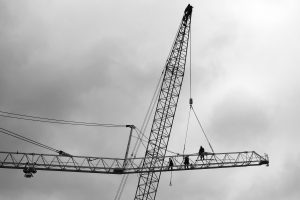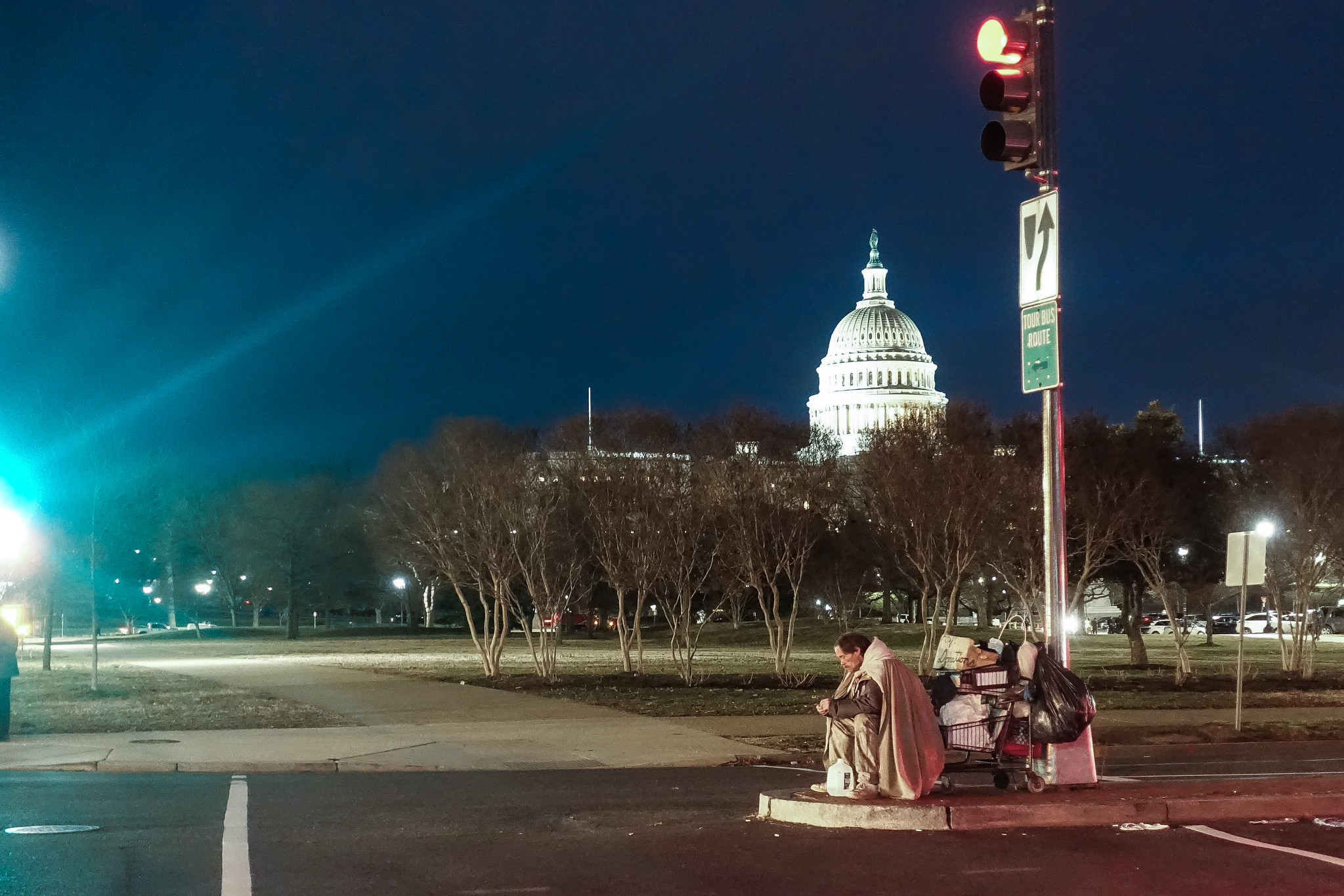As we careen into yet another pointless and preventable government shutdown, I’m republishing a post I wrote before the last shutdown in 2018 in which I survey the impact of the shutdown on OSHA and workplace safety.
Meanwhile, in preparation for a House Education and Labor Workforce hearing on OSHA tomorrow (Wednesday) morning, Ranking Member Bobby Scott (D-VA) and Ranking Member of the Workforce Protections Subcommittee Alma Adams have sent a letter to OSHA Assistant Secretary Doug Parker stating that “we trust that your testimony will detail how a government shutdown would impact the Occupational Safety and Health Administration’s (OSHA’s) critical mission to protect workers.”
We shall see to what extent the shutdown’s impact on workers is actually discussed at the hearing. Prediction: I trust that committee Republicans will not raise the issue.
And the White House has weighed in, warning that OSHA “would be forced to limit workplace inspections, denying workers a key protection against safety risk.”
A short political aside
For those generally down on government and politics, or who aren’t following the Washington circus minute by minute, let me remind you that this shutdown should not be blamed on “Congress” or on the failure of both parties to “get along” and stop bickering.
Republicans are responsible for the shutdown, and Republicans only — specifically the Freedom Caucus and Speaker Kevin McCarthy. Not only are they going back on a deal made by President Biden and Speaker McCarthy during the recent debt ceiling fight, but there is plenty of bipartisan support (Democrats and Republicans) to pass a simple “continuing resolution” that would keep the government open until the House, Senate and White House agree to final FY 2024 appropriations bills that a majority supports.
But McCarthy feels (with some justification) that he won’t be able to keep his job as Speaker if he relies on a bipartisan coalition of Democrats and Republicans to get us out of this jam. In other words, if Congress “gets along,” McCarthy loses his job. This is a man who sold his soul to the devil for a job he always wanted — and he’s likely to lose the job anyway. May the devil have mercy on his soul.
OK, now that I have that off my chest, let’s get to discussing the impact of the shutdown on workplace safety. Below is my 2018 post:
Government Shutdown: What Does It Mean For OSHA — And For Workers
Jan 19, 2018
As we go to press, it looks likely that the federal government, including the Occupational Safety and Health Administration, will shut down at midnight tomorrow night — for the second time in less than 5 years.
I have two vivid memories from the last government shutdown in 2013 and how it affected OSHA and American workers.
The first was hearing from some inspectors returning from an imminent danger investigation. On the way back to the office, they passed a construction project with workers on a high roof not wearing fall protection. And it wasn’t a small company with two guys in a pickup truck; it was a big company. The OSHA inspectors got out of the car and said something to the effect of “WTF?!” The response from the supervisor was “Oh, my bad. We thought OSHA was shut down.”
I’ll let that sink in for a minute… … … … … … … … … … … … …
OK, time’s up. Altogether now: Huh? Are you saying that you only protect workers when you think you might get caught by OSHA?
Thank you for confirming the need for a strong enforcement agency like OSHA. (And would you like to repeat what you said at a Congressional hearing?)
My second memory, from the morning the government closed, is more personal. Everyone was told to come in, close things down, and then go home by noon. David and I walked around the third floor of DOL where most of the OSHA staff works. (Well, David walked, I hobbled, being on crutches at the time.) We told people how sorry we were, how their work was valued and we hoped they’d be back soon. Needless to say, there were a lot of depressed and demoralized people up there. They’re all dedicated to protecting workers, they all work harder than anyone can imagine, they had families to support without pay, and none of this was their fault. They didn’t know when they’d be back, or if they’d even be paid for the time they were involuntarily furloughed.
What Happens (and doesn’t happen) at OSHA During A Government Shutdown?
A government shutdown doesn’t mean that no one works. Some government functions must be conducted, and some employees are “excepted” from being furloughed in order to conduct those important activities. OSHA is authorized to continue functions only on matters “of emergencies involving the safety of human life or protection of property.” That means that a small skeleton staff was left at headquarters and in the field to respond to:
- imminent danger situations
- workplace fatalities and catastrophes
- safety and health complaints, referrals or other information when employees are potentially exposed to “high gravity” hazardous conditions that present a high risk of death or serious physical harm. That meant, for example, employees working at heights without fall protection, employees working in trenches without cave-in protection, and employees who work with machine hazards likely to cause amputations, locked exit doors, mishandling of combustible or flammable materials that were likely to cause explosions, or workers working in hazardous confined spaces without proper protection. It also meant over-exposures to toxic chemicals such as methylene chloride, hydrogen sulfide or chlorine gas which could kill or disable a worker or cause severe or chronic health effect, such as asbestos or silica dust.
 OSHA staff was also allowed to work on ongoing cases if the 6 month statute of limitations was about to run out, or if there was evidence that the employer had not abated any high gravity hazardous conditions and workers would have remained at risk until the citation is issued.
OSHA staff was also allowed to work on ongoing cases if the 6 month statute of limitations was about to run out, or if there was evidence that the employer had not abated any high gravity hazardous conditions and workers would have remained at risk until the citation is issued.
Note that the “essential” OSHA employees will be working without pay — until the shutdown is settled and Congress agrees to provide back pay (which they have done in all previous shutdowns.)
State Plans
Another other issue is what happens in the 21 states (and Puerto Rico) who run their own state programs, and the 5 states (and the Virgin Islands) who run their own public employee program. All of these programs receive up to 50% of their funding from the federal budget, and are required, even during a government shutdown, to continue to operate their programs according to the same shutdown criteria that federal OSHA is using — which means they also have to ensure that inspections continue for fatalities, catastrophes, imminent danger and high gravity situations.
The problem we ran across is that all 26 states decide on their own what they’ll do and when they’ll do it. Some continued to operate without interruption, using their state funds to fund the agency while the federal government was shut down, while others cut back operations to emulate what OSHA was doing. Had the shutdown gone much longer, however, all would have cut back, and some even threatened to shut down completely because no one could give them any assurance that the money lost during the shutdown would be restored after it was over. (It was.) If any state had decided to shut down completely, federal OSHA would have been required to intervene to ensure that the “excepted” functions were conducted by federal employees.
What did not happen during the shutdown was:
Programmed Inspections: These are OSHA’s preventive inspections that target high-hazard industries (like chemical plants) or special hazards (like amputations) or employers with high injury and illness rate — before someone gets hurt or killed. Also any inspections requested by workers for hazards that would not be classified as “high gravity” would not happen.
Compliance Assistance: no one was allowed to go talk to any groups of workers or employer conferences. Some state consultation programs shut down while others furloughed most of their staff. Nothing new could be added to the OSHA website and no press releases were issued.
Whistleblower Investigations: Fired because you complained about a health and safety problem? You’re on your own until the shutdown is over. It was never clear what happens with the 30 day filing deadline for OSHA 11(c) violations.
Standards Development: You think OSHA standards are slow under normal circumstances?
What does a shutdown mean for workers?
Theoretically, OSHA is still open to workers who file complaints about imminent danger or other high gravity hazardous situations — an of course for deaths or catastrophes (three or more hospitalizations.) It’s unclear how OSHA would respond to hospitalization or amputation reports that are sent to OSHA under its new injury reporting rule which did not exist during the last government shutdown.
But, as mentioned above, programmed inspections — those pro-active inspections that OSHA schedules to address problems in high-hazard industries or operations or employers with high injury and illness rates — would not happen. How many workers will get hurt or die because no OSHA inspector will visit their workplace to ensure that hazards are abated before someone gets hurt or killed?
The main problem, of course, as we saw above, is the perception that OSHA isn’t on the job, which will encourage some employers to feel that they can take a vacation from safety. Workers may also be under the impression that the entire agency is shut down and there is no one to call. Imagine if the entire nation’s police forces shut down, and only promised to maintain a skeleton staff to respond after someone was shot or a bank was robbed. How likely would it be that crime would increase?
Then there’s the productivity loss from all the time already spent preparing for the shutdown. We did practically nothing else in OSHA’s front office and much of the rest of the agency in the days before the 2013 shutdown than prepare for the shutdown. Add to that all the work that’s not done during the days when the government is shut down.
And, finally, employers can be even more certain than they are now, that as long as they don’t kill or seriously injure someone, their chances of seeing an OSHA inspector cross their threshold are around the same odds as getting hit on the head with a meteor — twice in the same day. Bad for workers. The shutdown will be temporary. But for any workers killed or seriously injured during that time, the damage is permanent. The blood will be on Republicans’ hands.

[…] his Confined Space website, former OSHA Deputy Assistant Secretary Jordan Barb notes that OSHA staff would be allowed to work […]